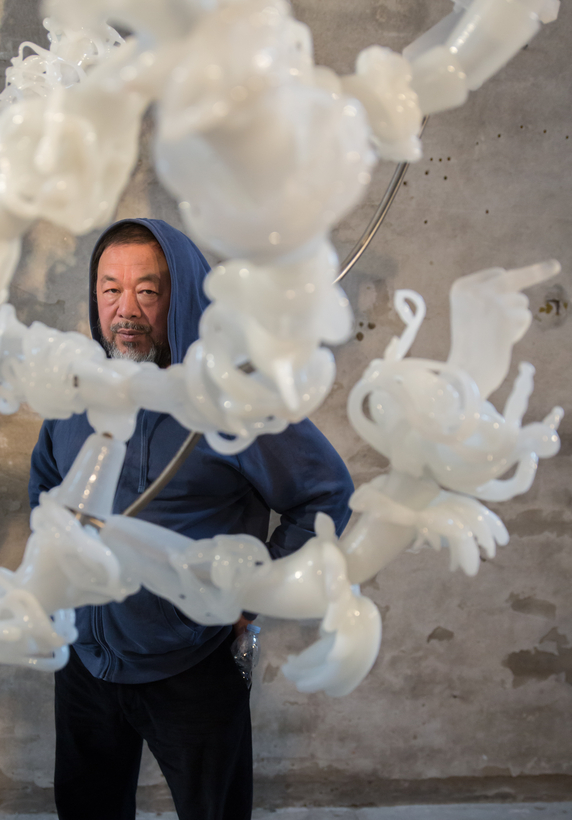It was back in the 1980s when I first saw the Blaschka Glass Models of Plants—commonly known as the “Glass Flowers”—at the Harvard Museum of Natural History. The room that held the cases was old and dusty, but the specimens under glass were astonishing—dewy and green.
Imagine the most meticulously precise botanical engravings magically aerated into three dimensions, in colors of surpassing delicacy. Glass insects supped here and there. Overripe fruit was frosted with fuzzy mold. Hair-thin tendrils corkscrewed in space.
The artists who produced this collection of 4,300 models—representing 780 plant species—were the father and son Leopold and Rudolf Blaschka, the last in a long line of Czech glassworkers. “We have tact,” said Leopold, meaning they had the touch. “My son Rudolf has more than I have, because he is my son, and tact increases in every generation.” They also had the eyes (in fact, they at one time made glass eyes).
Work on the flowers, funded by the wealthy Ware family of Boston, began in 1886, ended in 1936, and in between Rudolf refined basic lampworking techniques to a degree that has not been matched since.
Though the plant life in Harvard’s hothouse is immortal, as a permanent display it needed a refresh. This happened in 2016, and it’s reason enough for a return visit.

Currently on display is another Blaschka exhibition, “Sea Creatures in Glass,” which contains 60 models from the Museum of Comparative Zoology’s collection of 430 glass marine invertebrates, all made in the 1800s. These creations, bits and pieces of which were squirreled away in boxes and envelopes throughout the department, were gathered up and repaired over eight years.
The small octopi and urchins, anemones and jellyfish on view are beguiling—think of that recent wonderland, the film My Octopus Teacher—their translucence, their exotic coloration, akin to the beauty of Venetian glass.
“We have tact,” said Leopold Blaschka, meaning the touch. “My son Rudolf has more than I have, because he is my son, and tact increases in every generation.”
Has the Israeli artist Dafna Kaffeman seen the Blaschka flowers? Her flame-worked glass botanicals, which she presents in assemblages that include text and imagery embroidered on fields of felt, are ethereal evocations of place. “I like the ambiguity of [glass],” Kaffeman has said, “that it can depict very fragile and complex shapes like plants and insects.” It took time, however, for her to understand “how to use it as a means of expressing my ideas.”
Those ideas have to do with history and culture—the way a wildflower, or a potato beetle, can pull up powerful collective memory and emotion. Kaffeman’s exhibition “If You Thirst For a Homeland” is on view at the Chrysler Museum of Art, in Norfolk, Virginia, from August 12 to December 12.
In New York City, at the Museum of Arts and Design, Beth Lipman’s “Collective Elegy” is up through January 2, 2022. This glass artist finds inspiration in Renaissance and Baroque still-life paintings—paradisiacal arrangements of flora and fauna, baronial tables groaning with decanters, goblets, ewers, bowls, and crumbs. Transience and transparency are twin subjects for Lipman, who works without color, her ice-like shapes and banquets an art of haunting historicism. This is the first major scholarly assessment of Lipman’s career.

Just as Proust described the shimmering Delphic gowns of Fortuny in his novels, so painters placed art glass from Murano in portraits of the wealthy. The exhibition “Sargent, Whistler, and Venetian Glass: American Artists and the Magic of Murano”—opening at the Smithsonian American Art Museum in Washington, D.C., on October 8—looks at the dazzling glass that was collected during the days of the American Grand Tour and then depicted in paintings, a toast to Old World brilliance, or decadence. The exhibition consists of both the paintings and the glass.

Meanwhile, “Glasstress” at the Boca Raton Museum of Art, running through September 5, showcases a collaboration between 34 contemporary artists and the artisans of Venice’s Berengo Glass Foundation. Names such as Ai Weiwei, Prune Nourry, Ugo Rondinone, and Laure Prouvost worked with glassblowers over a period of four years, and their realized visions are on view here.
In Shanghai, through September 5, the solo survey “Mary Corse: Painting with Light” begs the question of how Corse gets light into her mesmerizing, monochromatic paintings. One way is with glass—specifically, the tiny glass microspheres that are mixed into the paint used on highways.
What Corse’s work is really about, of course, is perception. Of her celebrated White Light paintings she says, “as you move, or as the light changes, the painting changes. Your perception creates the painting.” Which brings us back to the Blaschkas—the eye, the touch, creation.
Laura Jacobs is AIR MAIL’s Arts Intel Report Editor
